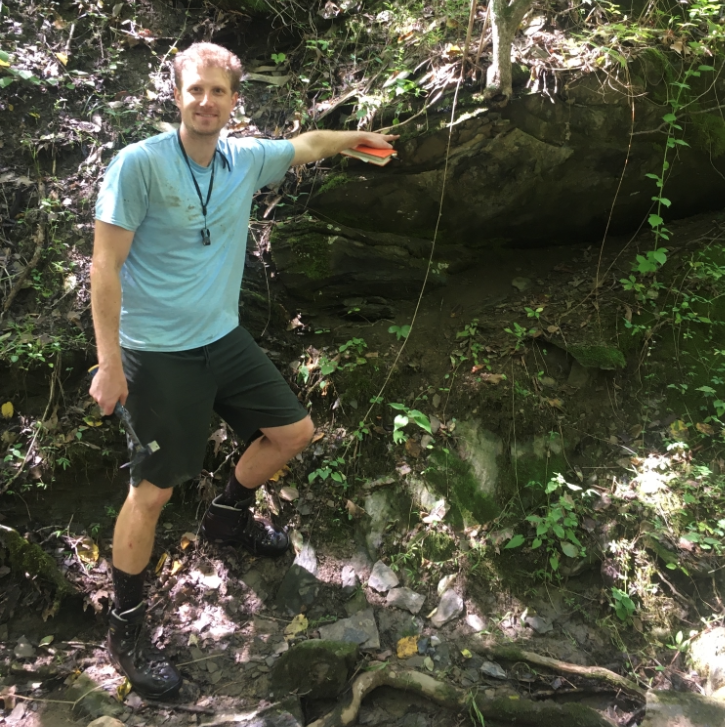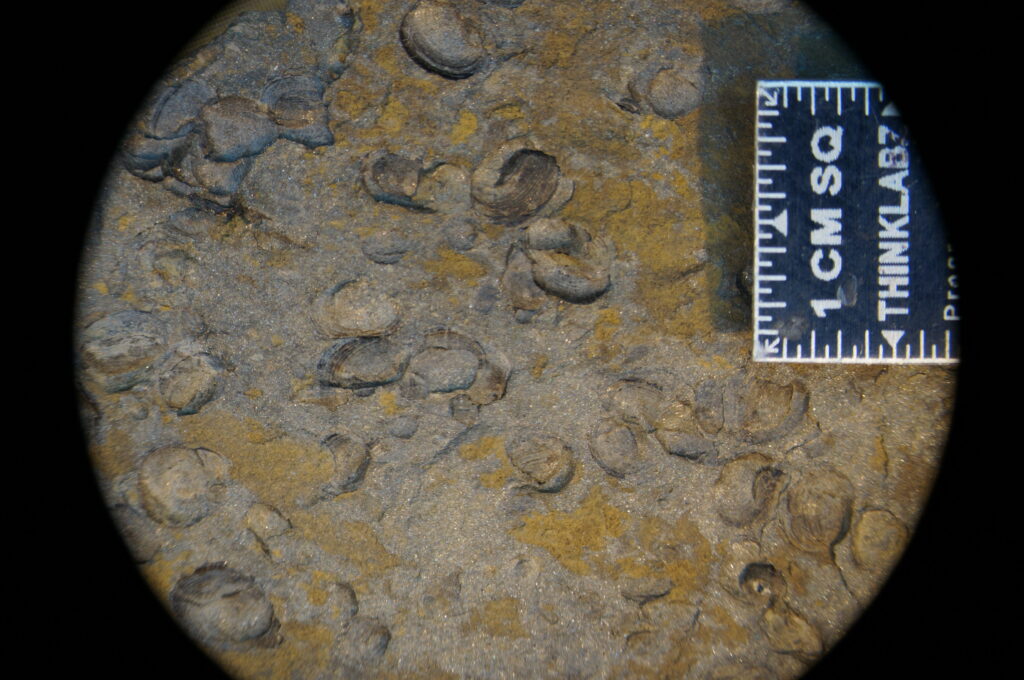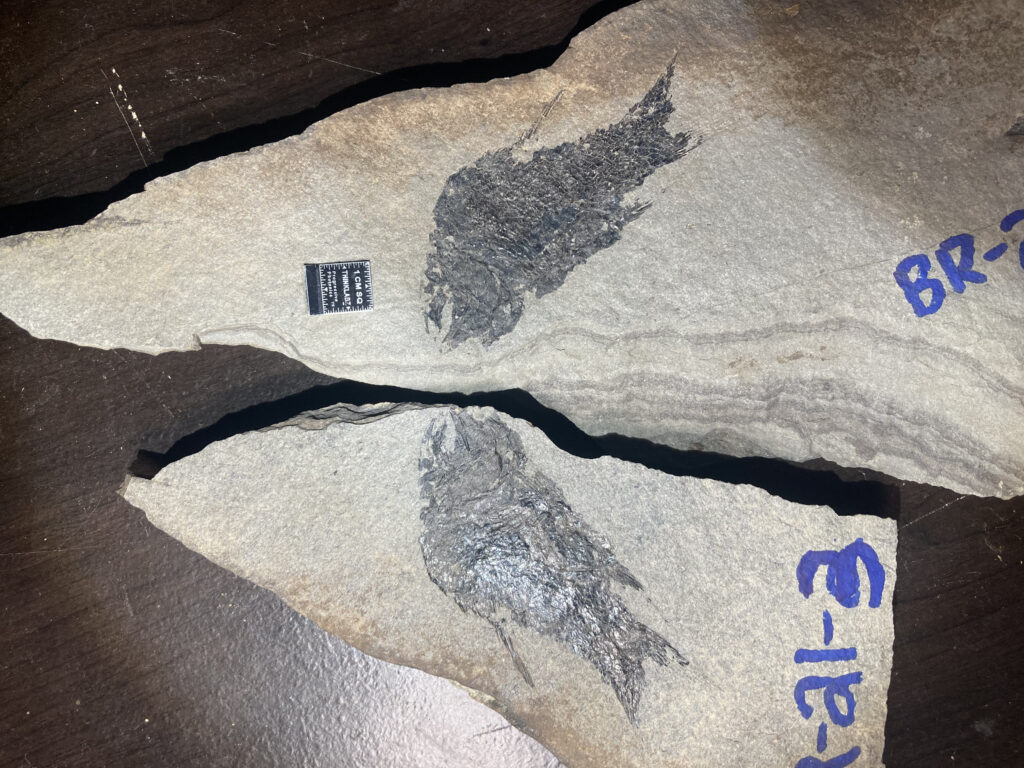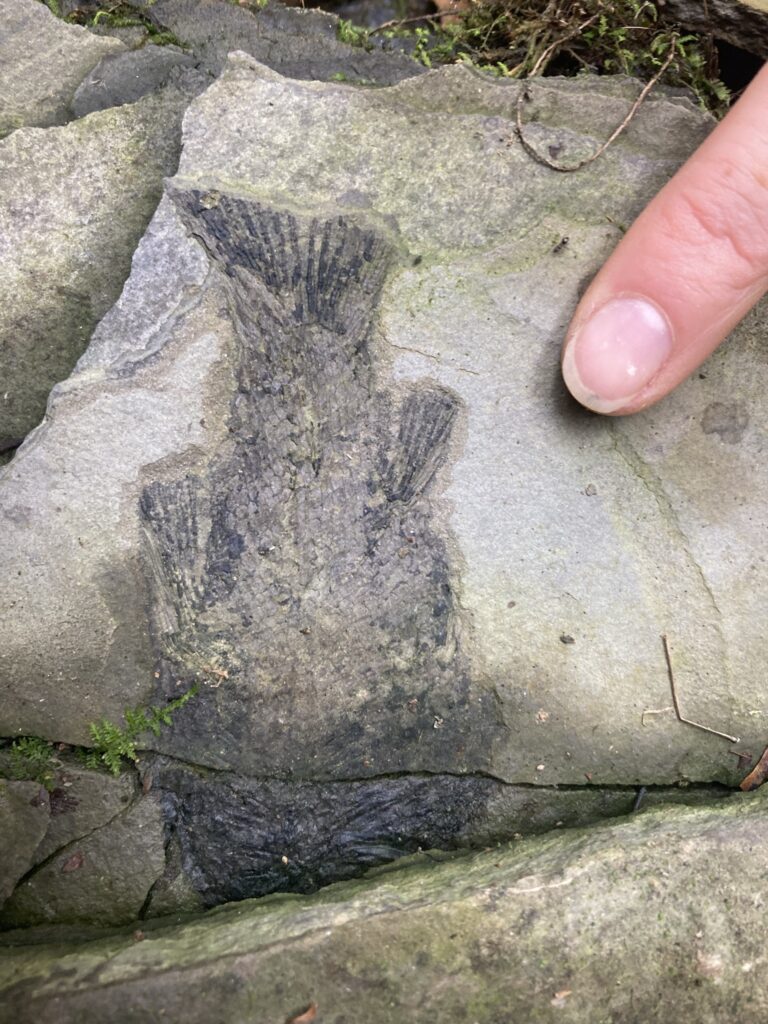As promised, we continue our spotlight series by introducing you to another member of the Preserve community making a major difference. This time we would like to tell you a bit about BRMNAP’s resident time-traveler, Ben Kligman!

While he may not literally be able to go back in time (that we know of), as a paleontologist, Ben’s work allows us to reconstruct what the area that is now the Preserve looked like hundreds of millions of years ago! A doctoral candidate at Virginia Tech, Ben’s specific time period of interest is the Late Triassic-Early Jurassic boundary. This stretch of time about 200 million years ago is significant as the fourth major extinction event occurred then, wiping out massive numbers of entire lineages and paving the way for the world we know today. A lot is known about how this affected marine life–where about a quarter of all species went extinct–but comparatively little is known about terrestrial ecosystems.
That’s where VOF’s Preserve at Bull Run Mountains comes in. The soon-to-be Dr. Kligman is always on the lookout for potential fossil sites. Using his expertise in geology, he was able to identify a special opportunity for discovery here. The Preserve is home to a very unique bedrock exposure called the Waterfall Formation. This type of rock is incredibly rare worldwide, and Bull Run’s is the southernmost Jurassic sediments in Eastern North America. Even more exciting for Ben, this is exactly the kind of rock that tends to yield fossils from the early Jurassic, shedding light on the Triassic-Jurassic extinction event. As Ben told me:
“[The Waterfall Formation] is a very unique and important chunk of rock for understanding one of earth’s largest extinction. It has real potential to enlighten our understanding of this event.”
Since he began his work here, Ben has unearthed over 100 articulated fossil skeletons. These include lake-dwelling species such as clam shrimp, ray-finned fishes, lobed fishes including the famous Coelacanth, and even evidence of terrestrial creatures like early reptiles. Some of the most impressive finds include entire, intact coelacanth skulls! Animals like this are critical for understanding our own evolutionary history, as such lobed fishes are more closely related to modern mammals than they are to ray-finned fishes.

Beyond the animal fossils, he has found many plant species as well, including cycads and cypress-like trees. This provides an understanding of what the entire community might have looked like so many million years ago. This snapshot provides key insight into an otherwise fairly unknown chapter in Earth’s living history.

Ben will be continuing his work here at the Preserve this Fall. We cannot wait to see what other surprises the Mountain will reveal to us. Stay tuned to our Facebook and Instagram to keep up with the latest discoveries!
